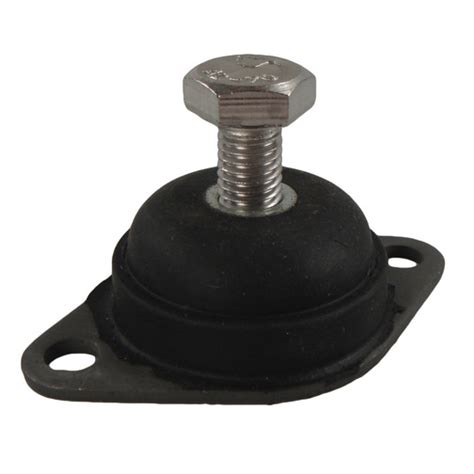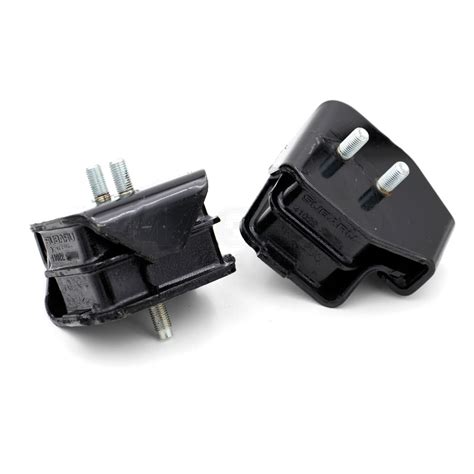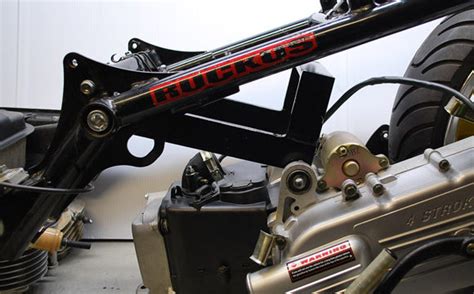Discover the significance, types, and maintenance tips for small engine mounts. Learn how worn mounts affect performance and longevity.When it comes to the efficient operation of machinery, small engine mounts often play an overlooked yet crucial role. These components serve as the foundation that supports and secures engines in vehicles, lawn equipment, and various machines, ensuring stability and reducing vibrations. Understanding the dynamics of small engine mounts is essential for both DIY enthusiasts and professionals alike, as they significantly impact the performance and longevity of the engine. In this blog post, we will explore what small engine mounts are, discuss their importance, examine the effects of worn mounts, outline the different types available, and provide useful maintenance tips. Whether you’re troubleshooting issues or looking to optimize your equipment, this comprehensive guide will equip you with the knowledge needed to keep your small engines running smoothly.
What are small engine mounts?
In the realm of automotive engineering, small engine mounts serve a crucial function, as they are designed to secure the engine to the vehicle’s frame or chassis while simultaneously minimizing the transfer of vibrations and noise during operation; this not only preserves the overall comfort of the driving experience but also ensures the longevity of various components.
Typically constructed from a combination of durable materials such as rubber and metal, small engine mounts absorb the vibrations produced by the engine’s operation and provide stability, preventing excessive movement that can lead to misalignment or damage over time; by doing so, they contribute significantly to overall vehicle performance and efficiency.
Furthermore, small engine mounts come in various designs, including hydromounts, solid mounts, and polyurethane mounts, each of which offers distinct advantages tailored to specific applications, such as enhancing performance in racing vehicles or ensuring comfort in everyday passenger cars, thus showcasing the importance of selecting the right type of mount for the intended use.
Importance of small engine mounts
Small engine mounts are essential components that provide a secure and stable connection between the engine and the chassis of a vehicle or equipment, ensuring that the engine operates smoothly while minimizing vibrations that could lead to damage or discomfort.
When the engine mounts are properly functioning, they help in absorbing vibrations produced during the engine’s operation, which not only protects the engine itself from excessive wear and tear but also improves the overall driving experience by offering a quieter and smoother ride.
Furthermore, the importance of small engine mounts extends beyond just vibration control; they also play a crucial role in maintaining the engine’s alignment during high-stress conditions such as acceleration, deceleration, and rough terrains, thereby preventing unnecessary strain on the engine and its components, which can lead to costly repairs or replacements down the line.
Effects of worn engine mounts
Small engine mounts, which are crucial for securing the engine to the chassis of a vehicle or machinery, can experience wear and tear over time, leading to various adverse effects that not only impact performance but can also pose safety risks; therefore, understanding the implications of worn engine mounts is essential for anyone responsible for the maintenance of small engines, whether in lawnmowers, chainsaws, or go-karts.
When engine mounts become degraded, signs such as excessive vibrations during operation can become evident, making the ride uncomfortable and potentially causing damage to other components due to the constant jolting and movement, which might lead to more costly repairs in the long run and also affect the overall engine performance by diminishing its effectiveness and efficiency.
Additionally, worn mountings can lead to misalignment of the engine, causing strain on the various connected parts that rely on proper positioning for optimal function, and as a result, components like the transmission, drive shafts, and exhaust systems may face undue stress, leading to premature failure or malfunctioning over time; thus, recognizing and addressing the effects of worn engine mounts s
Types of small engine mounts
When it comes to the types of small engine mounts, there are primarily three categories that serve different purposes and applications, ensuring that engines operate smoothly while minimizing vibrations and maintain alignment within machinery. The first type is the rubber engine mount, which is commonly used due to its excellent vibration absorption capabilities; these mounts are designed to dampen vibrations from the engine, providing a smoother operation in vehicles and equipment. Secondly, we have polyurethane mounts, which are known for their durability and strength, making them ideal for high-performance applications where additional strength and rigidity are required, thus offering more torque resistance compared to their rubber counterparts.
Another popular option is the solid engine mount, which is often utilized in racing applications or scenarios where maximum power transfer is crucial; these mounts have no isolation qualities and connect the engine directly to the chassis, providing the most stable solution for high-stress uses, however, they do tend to transfer more vibrations to the vehicle, which might not be suitable for everyday operation. Furthermore, there are also specialized mounts, such as adjustable engine mounts, which allow for fine-tuning of engine positioning, often used in custom builds or modifications where precise alignment is necessary. Each type of small engine mount, whether it be rubber, polyurethane, solid, or adjustable, offers unique benefits catering to specific requirements and operational needs.
To better illustrate the differences among the types of small engine mounts, here’s a table summarizing their characteristics:
| Type of Engine Mount | Vibration Isolation | Durability | Use Case |
|---|---|---|---|
| Rubber | High | Moderate | General applications |
| Polyurethane | Moderate | High | Performance vehicles |
| Solid | Low | Very High | Racing and high-stress applications |
| Adjustable | Varies | High | Custom and specialized builds |
Understanding the types of small engine mounts available can significantly impact the performance and lifespan of your engine, making it essential to choose the appropriate type based on
How to maintain small engine mounts
Maintaining small engine mounts is crucial not only for the performance of any small engine machinery but also for the safety and longevity of the equipment itself, as these mounts serve a pivotal role in absorbing vibrations and ensuring that the engine is securely attached to its frame, thereby preventing excessive wear and tear over time.
To ensure the effective maintenance of your small engine mounts, one should routinely inspect them for any visible signs of deterioration, such as cracks, excessive wear, or separation from the engine, as well as ensuring that the mountings are properly torqued, as a loose engine mount can lead to misalignment and further complications, compromising the equipment’s operational efficiency.
In addition to regular inspections, it is also advisable to clean the engine mounts periodically to prevent the buildup of dirt and debris, which can negatively impact their functionality; using a soft cloth and mild cleaning solution can help in removing contaminants, and applying a suitable lubricant can ensure that the mounts remain flexible and effective in absorbing vibrations, thereby enhancing the overall performance of your small engine machinery.
Frequently Asked Questions
What are small engine mounts?
Small engine mounts are components designed to support and secure small engines in place, minimizing vibrations and ensuring stability during operation.
Why are small engine mounts important?
They are crucial for keeping the engine securely attached to its housing, reducing wear and tear, and enhancing the overall performance and longevity of the engine.
What materials are commonly used for small engine mounts?
Small engine mounts are typically made from rubber, metal, or a combination of both, offering a balance between durability and vibration dampening.
How do I know if my small engine mount needs replacing?
Signs of a failing engine mount include excessive vibrations, unusual noises, misalignment of the engine, or visible wear and damage to the mount itself.
Can I replace small engine mounts myself?
Yes, replacing small engine mounts can often be done as a DIY project if you have basic mechanical skills and the right tools, but it’s essential to follow safety precautions and manufacturer guidelines.
What factors should I consider when choosing small engine mounts?
Consider the weight of the engine, the specific application, the type of vibrations it may experience, and environmental factors such as temperature and exposure to oils.
How often should small engine mounts be inspected?
It’s advisable to inspect small engine mounts regularly, especially during routine maintenance checks or whenever you notice changes in engine performance or behavior.





